1113 Chartres St, New Orleans, Louisiana 70116
On the block of Chartres and Ursulines Street in New Orleans' French Quarter, just across from the Ursulines Convent, stands a Greek Revival house that looks nothing like its next door neighbors. Painted a pale, butternut yellow, the house's Palladian-style facade is a stark contrast to the homes around it. Its bricked-off garden space is just another dignifying feature.
Although it might be the architecture of 1113 Rue Chartres that slows your steps and catches your eye, it is the history of the property that reels you in, peaking your curiosity. The Beauregard-Keyes House, which is a museum today, is most known for its famous past residents, both those that are alive . . . and dead.
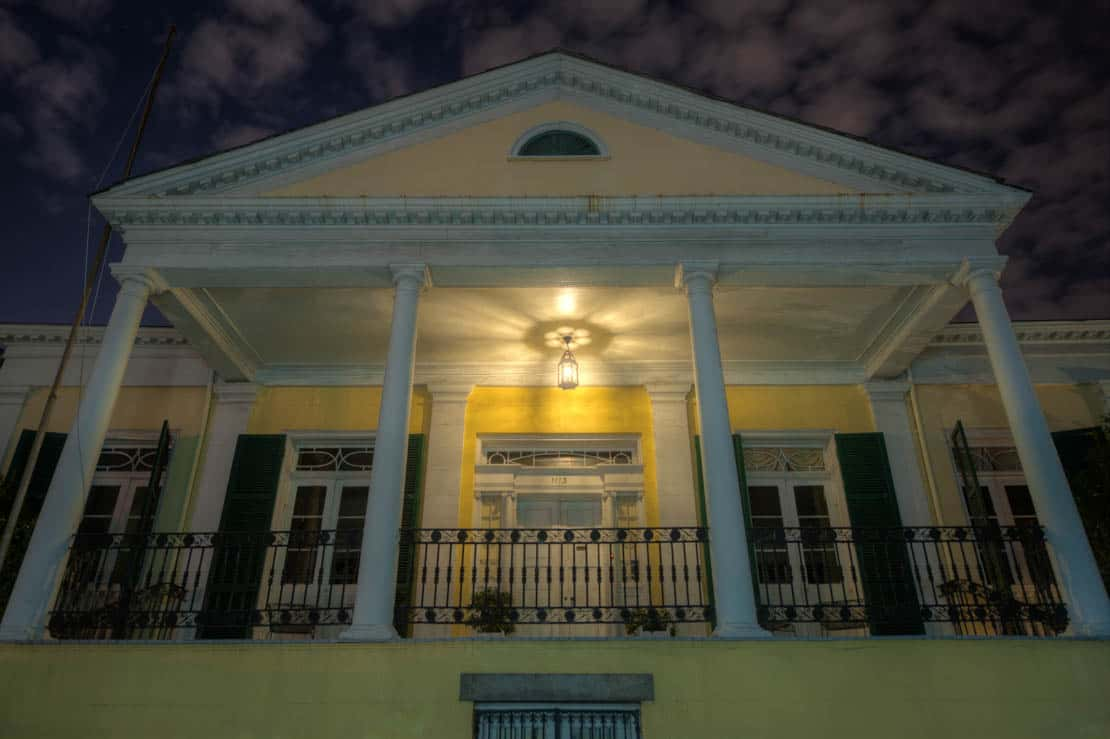
Once upon a time, back in the early eighteenth century, the lot of 1113 Chartres Street was actually intended to be a weapons arsenal for the budding city of New Orleans. Plans switched course when the Ursuline nuns arrived from France in 1726, and the King of France signed the whole block over to the nuns instead.
It remained religious land until 1825 when Joseph Le Carpentier purchased the property. Le Carpentier had visions for the home that he hoped to have built, but it seems that there were some minor squabbles because the first architect and builder were let go only two months after their contracts were signed. They were replaced with Francois Correjolles, an architect from Baltimore, and James Lambert, a free person of color from New Orleans. Le Carpentier and his family lived for a time at the property, but in 1835 moved to Royal Street where he then lived with his daughter and son-in-law, Alonzo Morphy.
Fun Fact: Le Carpentier's grandson was Paul Morphy, the youngest world-famous chess champion. He was born within 1113 Chartres, and later moved with parents and grandfather. From a young age, Paul Morphy was able to beat chess players years ahead of him in age and, reportedly, skill too. Although Paul tried to make it as a lawyer, his infamy within the chess world was such that no one took him seriously in his new career. He was found dead in his bathtub, possibly from heatstroke, at the age of 39.
Le Carpentier sold 1113 Rue Chartres to the Swiss Consul in New Orleans, Swiss immigrant John Merle. It was Merle's wife, Madame Anais Philloppon Merle, who was responsible for constructing the parterre garden. She ordered two two tall brick walls to enclose the garden space, and added two iron-laced windows so that passersby could peek through. For those in the French Quarter, the garden might as well have been a "jungle," as they called it then--the custom was to place courtyards and gardens in the rear of the house for two main reasons. The first: the French Quarter stank to high heaven, and the strategically placed courtyards offered families a reprieve from the smell. The second: Doing so let the Creoles believe that they were humble. Madame Merle's garden no doubt ruffled the feathers of the Creoles, especially as the house itself was such a transitional blend of French and American design.
The Creoles hated the Americans.
It was a cultural thing.
But once more, the Merles were also unable to hold on to the property, due to financial difficulties, and it was sold.
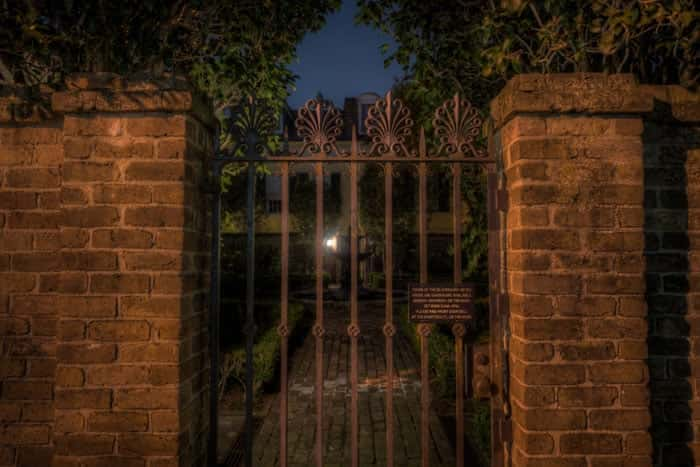
Some years later, in 1865, Dominique Lanata bought the property. Lanata was a grocer in the French Quarter, and also the Consul-General of Sardinia in New Orleans, and he saw 1113 Chartres as a fine investment property. He'd rent it out--which he did until 1904--and he'd collect on the lease money.
Lanata's first tenant sealed the fate of the property: His name was Pierre Gustave Toutant Beauregard, and he was considered of the first and most respected generals of the Confederate Army. Beauregard had commanded troops in the Western Theatre. He'd fought in the Battle of Bull Run, the Battle of Shiloh and the Siege of Corinth, Mississippi. But the general had done even more for his beloved Confederacy: in 1864, Beauregard helped to save the city of Petersburg, Virginia, which, if he'd failed, would have all0wed Union troops a clear passage to the Confederate capital of Richmond, Virginia. Nevertheless, Beauregard and President Jefferson Davis had always butted heads, and the General's career felt that tension acutely.
He returned to New Orleans after the war in hopes of finding a new job. He did so, becoming the president of the New Orleans, Jackson and Great Northern Railroad. Upon his return, however, his wife's family had auctioned off her ancestral home and Beauregard was left without a place to stay. Mourning the loss of his bride, he and his two sons moved into Dominique Lanata's rental home: 1113 Rue Chartres. He continued to lease the property until 1868/1869, before then moving his family to 229 Royal Street.
Disregarding the fact that General Beauregard had only lived at 1113 Chartres as a tenant, locals began to refer to the property as the Old Beauregard House.
(One has to wonder how Dominique Lanata felt, or whether he'd simply been pleased to have a first-class general living under his roof for eighteen months).
When Beauregard passed in 1893, after losing his battle with heart disease, his body was laid to rest in the Army of Tennessee Vault in Metairie Cemetery.
Nothing, perhaps, could have prepared the locals and neighbors of 1113 Rue Chartres for the events which would unfold under the property's new ownership.
The Lanatas sold the house to the Giacona family in 1904, all of whom were involved with a liquor business. A wholesale liquor business, if you get what I mean. They operated as a wine cellar on the first floor and for the first few years while living in the Old Beauregard House, the Giaconas lived lavishly. Rumors began to spread that perhaps not all was what it seemed at the mansion on Chartres. For although the house Giaconas sold their liquor and made a cushy living, the Sicilian Black Hand (a sect of the mafia in New Orleans) felt that the Giaconas were impeding on territory. That they were not paying their dues. The name "Black Hand" referred, naturally, to their less than gracious extortion methods.
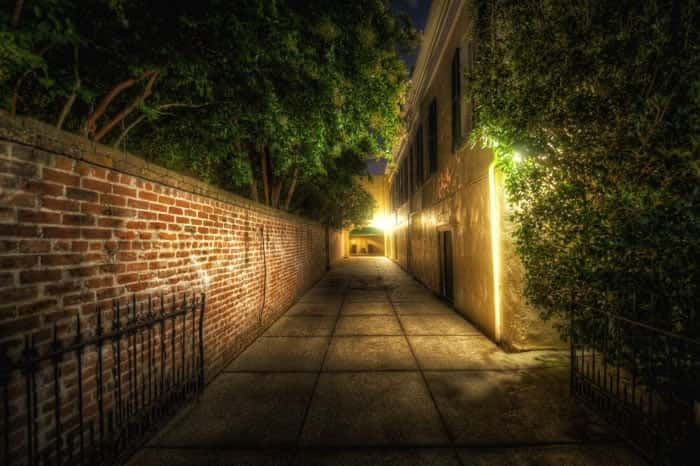
Pietro Giacona, the patriarch of the family, issued an invitation to four of the members of the mob, but it was also he (and his son) that issued their death. In the middle of the dinner, the Giaconas stood, grabbing their pistols and opening fire. Three of the Black Hand dropped to the floor, lifeless, while the fourth was gravely injured. He somehow managed to escape but he did not get far, crawling as he was on the cobblestoned streets outside. The assassinations had been conducted with Pietro's two young daughters just down the hall in their bedrooms.
Despite their rather obvious connections to the mob, the charges against the Giaconas for murder was dropped in 1910. During this in-between period, they remained in 1113 Rue Chartres, and the neighbors frequently commented that the Old Beauregard House looked like an actual fortress, all boarded up and secured. Though the house belonged to Pietro Giacona until 1925 when it was put up for auction, the men in the family had taken off years earlier. Abandoning the house--and their tax payments--and perhaps also the young ones in the family. According to an interview done at Loyola University New Orleans a few years ago, the daughters who had heard the entire thing were left on their own after their father disappeared. To make money, they sewed baby clothes and sold them in the French Quarter for profit.
1113 Rue Chartres, this time around, faced the possibility of demolishment.
In 1925, the house was put up for auction. Antonio Mannino, a Giacona by marriage, made the purchase. He threatened to tear it down if preservationists did not step in. His plans for the property? To make it into a macaroni factory. Apparently his threats works because soon enough local, concerned citizens came forth to relieve Mannino of the house.
While the Owens family made the initial purchase--they were the founders of the Confederate Memorial Hall--it was not until a New Hampshire-born writer decided that she just had to live there that the Old Beauregard House was once again effused with revitalization.
In 1945, Frances Parkinson Keyes moved in and began renovations. She re-added the parterre garden that had fallen into disrepair. It was here that she penned thirty novels, including Dinner at Antoine's and The Chess Players, which was about Paul Morphy. Keyes wintered at the property until her death in 1970. And since then the Keyes Foundation has operated the property as a museum.
The history of the Beauregard-Keyes House is a rich one, complete with murder and tragedy and loss--and ghosts.
You heard that right: the Beauregard-Keyes House is rumored to be one of the most haunted locations in New Orleans, where the paranormal activity is so real that it makes this two-century old property come alive. But who, exactly, is still haunting 1113 Rue Chartres?
The most common paranormal occurrences are reported sightings of Civil War soldiers. The ghosts are almost dressed wearing their grey or butternut colored uniforms. When they are spotted, they simply stand there, a vacant look in their expression as if staring off into the distance. Within moments their spirits dematerialize, slipping away into the night as if they were never there to begin with.
It was after World War II that reports of seeing these ghostly soldiers came to light. Those passing by the house heard the distinct shots of gunfire; heard the unmistakable sounds of groaning and shouting; and caught the scent of musket fire as it carried on the breeze. Victor Klein wrote in his 1993 book, New Orleans Ghosts that "Men with mangled limbs and blown-away faces swirl in a confused dance of death . . . Horses and mules appear and are slaughtered by grapeshot and cannon. The pungent smell of blood and decay permeated the restless atmosphere."
Is it possible that the paranormal phenomenon is directly related to the theory of attachment? Are they perhaps the dead and wounded soldiers from the Battle of Bull Run or the Battle Shiloh, the bloodiest one of them all?
According to Tim Nealon, paranormal investigator and founder of Ghost City Tours, paranormal attachment can occur when a person's spirit, after death, latches on to an object or a living person that was by the scene of their own death. It goes without saying that General Beauregard fought in a great number of battles, many of which saw a great number of deaths. He was, literally, surrounded by it. It's possible that one of Beauregard's possessions, brought back with him to the house, then became an attachment object for the spirits of a few of the men who died around him during the battle. If this theory is correct, it would surely explain most of the hauntings occurring at the Beauregard-Keyes House.
After all, Beauregard's spirit is still reported to be seen at the museum as well. Frances Keyes once wrote that Beauregard's ghost "pokes around at night looking for his boots. It seems they buried the poor man in his stocking feet and, being a meticulous dresser, especially in uniform, he cannot rest until he finds them."
Is it likely that whatever spirits lurking within the Beauregard-Keyes House are dark enough to drive people out of their mind? (This author doesn't believe so).
Paul Morphy, while living at 1113 Rue Chartres, seemed to suffer some sort of a mental breakdown One day police found Morphy running down Ursulines Street. If the fact that he was naked wasn't enough of an eye-catcher, there was also the minute detail that he was wielding an axe, threatening to kill the first person who stepped in his path.
Although the image skirts the line between amusing and shocking, the fact remains that something occurred in the house had pushed him over the edge. Morphy was recorded as claiming that he'd been possessed, but if he had . . . by what? No accounts have since some out about an entity making itself at home at the Beauregard-Keyes House, so it's quite likely that Morphy's public breakdown was a personal one, driven by nothing but personal demons and a vibrant imagination.
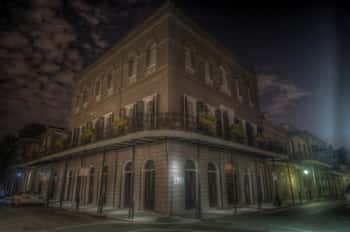
New Orleans' most infamous haunted house

New Orleans' most haunted Cemetery
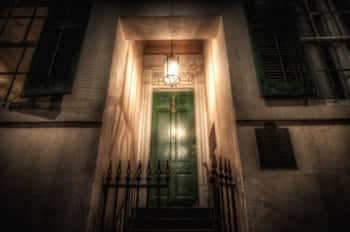
Was this the site of a grizzly mass murder?